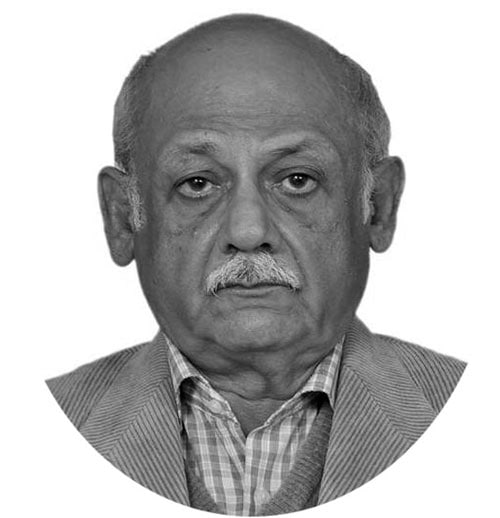Violent religious and extremist militancy
AFTER a brief hiatus of relative peace, extremist militant religious groups are once again threatening the very existence of the state and openly challenging the writ of the government of the day.
After the tragic devastating attack on the Army Public School in Peshawar in 2014 the state of Pakistan finally decided to deal with the monster of religious fanaticism under the National Action Plan, the country’s 20 point counter terrorism strategy which was formulated by consensus by all the political forces of the country and entrusted for implementation to the army high command.
This armed onslaught against the Islamist militants achieved some spectacular success and most violent extremist groups were pushed back into hiding by dismantling and disrupting their extensive networks in the country.
Resultantly Pakistan became immune to their cruel bloody actions for some time.
Pakistan today is once faced with the threat of a hydra headed religious monster from within its own people.
The threat is not external it is from our own self-created Frankenstein monster of religious fanaticism bigotry and extremism. With the rebirth of the Taliban in Afghanistan the threat has become more potent and real.
Apart from many older members of the religious terrorist groups in Pakistan the Tehreek-e-Labbaik Pakistan or TLP is the new rising force on the political and social horizon of Pakistan.
The recent show down with the government and the resultant capitulation of the state before this obscurantist group of fanatics has proved beyond a doubt that Islamist extremist groups in the country now have the street power to dictate terms and get them accepted by the government without a very great effort or sacrifice or even to get away with murder.
The rise and popularity of violent groups based on religion is not new in Pakistan. The Sipah-e-Sahaba Pakistan was founded way back in 1985 and rose to fame and glory very quickly because they had plenty of supporters and financiers in the country and even abroad. The ongoing Afghan Jihad against the Soviet Union helped these groups to expand and prosper.
After a while in the 1990s a more militant and violent faction called the Lashkar-e-Jhangvi emerged that added fuel to the raging fire of the sectarian conflict and intolerance.
The SSP became a mainstream political party with some seats in the National Assembly but its violent nature was an open secret and it continued to challenge and engage in violent encounters with the law enforcing agencies of the country.
During this period the regime of Zia-ul-Haq was openly sympathetic and supportive of such anti Shia groups who also received funding from abroad particularly.
Since after the Taliban victory in Afghanistan, the security landscape of Pakistan is changing and evolving at a fast pace.
The spate of attacks by the TTP shows that the religious militant groups who were dormant for the last few years are rising, regrouping and preparing to launch another tsunami of violence based on their twisted idea of imposition of the rule of Sharia in the country.
The government has shown a definite tilt towards the philosophy of the Taliban and seem to be sympathetic towards their objectives in Afghanistan and Pakistan and this is in no way good for the future of the country. The government is already bowing before the dictates of the IMF.
The rising price spiral has crippled the life of the common man and the street protests are now turning violent providing more space and opportunity to the religious extremists to grab the opportunity and unleash their agenda of violence death and destruction.
In Pakistan, formerly Federally Administered Tribal Areas (FATA) have always been a base for Islamist militancy and extremism.
After the launch of the National Action Plan, Pakistan Army had launched numerous operations against the TTP and its affiliated groups and managed to eliminate or scattered them from these areas.
Since then the TTP leadership took refuge in Afghanistan or went into hiding in Pakistan but now their activities are gaining momentum once again.
This time around there is an additional threat in the form of the Islamic state joining hands with the TTP to carry out attacks and support the TTP in their nefarious designs.
Our history is replete with horrors unleashed by the Islamist religious fanatics. They are responsible for over eighty thousand civilian deaths and some eight thousand fatalities suffered by the armed forces.
It is beyond imagination to think how could any responsible patriotic leader even think of starting a “reconciliation process” and even the Supreme Court of Pakistan appears to be worried by the decisions of the government A bench of the Supreme Court headed by CJP Gulzar Ahmed, Justice Qazi Mohammed Amin and Justice Ijaz-ul-Ahsan summoned the Prime Minister and made such observations: CJP Gulzar “You are in power.
The government is yours what did you do? You brought those guilty TTP to the negotiating table? Justice Amin said, “We are bringing them back to the negotiating table instead of taking action against them? And added “Are we going to surrender again”
—The writer is Professor of History, based in Islamabad.










